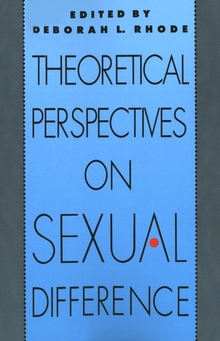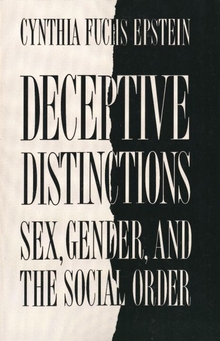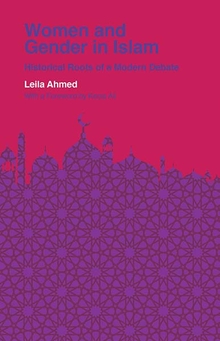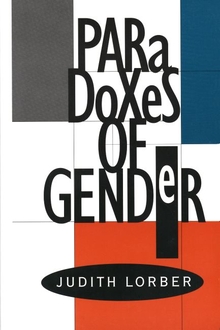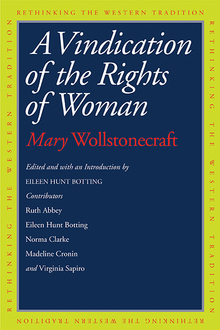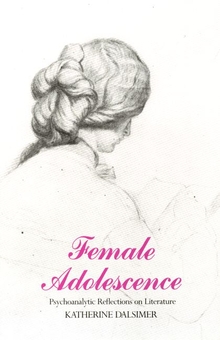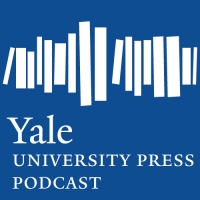Virginia Woolf
WARNING
You are viewing an older version of the Yalebooks website. Please visit out new website with more updated information and a better user experience: https://www.yalebooks.com
Becoming a Writer
Katherine Dalsimer
By the time she was twenty-four, Virginia Woolf had suffered a series of devastating losses that later she would describe as “sledge-hammer blows,” beginning with the death of her mother when she was thirteen years old and followed by those of her half-sister, father, and brother. Yet vulnerable as she was (“skinless” was her word) she began, through these years, to practice her art—and to discover how it could serve her. Ultimately, she came to feel that it was her “shock-receiving capacity” that had made her a writer.
Astonishingly gifted from the start, Woolf learned to be attentive to the movements of her own mind. Through self-reflection she found a language for the ebb and flow of thought, fantasy, feeling, and memory, for the shifts of light and dark. And in her writing she preserved, recreated, and altered the dead, altering in the process her internal relationship with their “invisible presences.” “I will go backwards & forwards” she remarked in her diary, a comment on both her imaginative and writerly practice.
Following Woolf’s lead, psychologist Katherine Dalsimer moves backward and forward between the work of Woolf’s maturity and her early journals, letters, and unpublished juvenilia to illuminate the process by which Woolf became a writer. Drawing on psychoanalytic theory as well as on Woolf’s life and work, and trusting Woolf’s own self-observations, Dalsimer offers a compelling account of a young artist’s voyage out—a voyage that Virginia Woolf began by looking inward and completed by looking back.
Astonishingly gifted from the start, Woolf learned to be attentive to the movements of her own mind. Through self-reflection she found a language for the ebb and flow of thought, fantasy, feeling, and memory, for the shifts of light and dark. And in her writing she preserved, recreated, and altered the dead, altering in the process her internal relationship with their “invisible presences.” “I will go backwards & forwards” she remarked in her diary, a comment on both her imaginative and writerly practice.
Following Woolf’s lead, psychologist Katherine Dalsimer moves backward and forward between the work of Woolf’s maturity and her early journals, letters, and unpublished juvenilia to illuminate the process by which Woolf became a writer. Drawing on psychoanalytic theory as well as on Woolf’s life and work, and trusting Woolf’s own self-observations, Dalsimer offers a compelling account of a young artist’s voyage out—a voyage that Virginia Woolf began by looking inward and completed by looking back.
Katherine Dalsimer is on the faculty of the Columbia University Center for Psychoanalytic Training and Research and is consulting psychologist to the Columbia University Mental Health Service. She is on the faculty of the Weill Medical College of Cornell University and is the author of Female Adolescence: Psychoanalytic Reflections on Literature, published by Yale University Press.
“Virginia Woolf is an elegant, psychoanalytically sophisticated expansion of the biographical literature on Woolf. Beyond that, it is an exquisitely sensitive exploration of the workings of memory and the process of mourning, using Woolf’s writings as an example—one that vastly exceeds in richness and scope any case vignette in our clinical literature. . . . This book, with its lovely, jargon-free limning of such important concepts as internalized object relations, condensation, and screen memories, would make an excellent introduction to the core of psychoanalytic understanding, for students of all levels. . . . [A] masterful work of insight and imagination.”—Wendy Wiener Katz, Psychologist-Psychoanalyst
“This astute study is written with eloquence, clarity, and tact. A wonderful contribution.”—Paul Schwaber, Wesleyan University
“This astute study, which focuses on Woolf’s adolescent years, is written with eloquence, clarity, and tact. Closely scrutinizing the recently available adolescent diaries with lovely empathy and striking perceptiveness, enabling interplay with Woolf’s reflections at later moments in life, and shedding new light on the fiction, Dalsimer has made a wonderful contribution.”—Paul Schwaber, Wesleyan University
“Just when we might have thought nothing else of novelty could be written about Virginia Woolf, here is an analysis by a clinical psychologist of her youthful and writing self that proves us happily wrong. Dalsimer’s crystal-clear and elegant style permits us to hear, differently sometimes and better always, the child’s, the adolescent’s, and the young woman’s mode of experiencing and of responding. Bending an intense and practiced listening ear to the narrative in all it peculiarity, she gives us a highly moving analysis.”—Mary Ann Caws, Distinguished Professor of English, French, and Comparative Literature, Graduate School, City University of New York
“Katherine Dalsimer’s literary sensitivity, psychoanalytic sophistication, and expert understanding of female development enrich our appreciation of Virginia Woolf and her work. Dalsimer weaves together Woolf’s fiction, letters, and diaries, giving new meaning to each. The result makes for wonderful reading. We learn about writers, women, grief, creativity, and ourselves, and read Woolf with new pleasure and insight.”—Robert Michels, M.D., Walsh McDermott University Professor of Medicine and Psychiatry, Cornell University; Training and Supervising Psychoanalyst, Columbia University
“Dalsimer . . . elegantly explains how Woolf’s imagination, often subsumed in tragedy, could still find pleasure in life’s daily rhythms, and how writing ‘consoled and sustained her—as much as it was possible for her to be consoled or sustained’. . . . The close textual reading targets this [book] for serious students of Woolf and for those interested in the links between literature and psychology.”—Publishers Weekly
“A fascinating, psychoanalytically informed look into how Virginia Woolf became the particular writer she was. . . . In this engaging work of psychobiography, Dalsimer weaves back and forth among Woolf’s early journals, written when she was 15, 17, and 21, interposing those thoughts with Woolf’s letters, book reviews and essays, as well as her novels. . . . Familiarity with Woolf’s books, while helpful, is not necessary to enter this narrative.”—Bernadette Murphy, Los Angeles Times
“Dalsimer provides a thoughtful, elegant exploration of the idea that a creative outlet can enable an artist to escape her inner life. . . . Dalsimer’s skillful organization of Woolf’s expansive body of work and intelligent analysis of Woolf’s literature gives us a thoughtful, nuanced picture of the connection between Woolf’s illness and her extraordinary artistic talent.”—Rebecca L. Stone, The Harvard Crimson
“[An] original and readable study. . . . The discussion focuses on the origins, development, and purpose of [Woolf’s] writing, particularly its relationship both to her ambivalent/contradictory experiences with and memories of her father, mother, half-sister Stella, and brother Thoby—including the complicated effects on her of their deaths—and to her recurring bouts with mental illness.”—Choice
“Dalsimer’s book has much to offer those interested in the vicissitudes of memory and mourning in Woolf’s life and work. Her focus on the changing nature of Woolf’s fictional and biographical portraits of her parents and her childhood offer a much-needed corrective to those of us who have preferred only one of the multiple versions Woolf created over the course of her life. Dalsimer’s weaving together of the work of the maturity with the juvenilia and diaries from which it emerged is especially impressive.”—Patricia Moran, Woolf Studies Annual
"A wonderful book The development of Woolf as a writer springs vividly to life as Dalsimer listens carefully to both what is said and what is unsaid, even effaced. . . . Virginia Woolf: On Becoming a Writer can be read by psychoanalysts as a model of applied psychoanalysis. Readers interested in the beginnings of a gifted writer will be delighted by the depth of this study. . . . It is a unique contribution to our understanding of Virginia Woolf."—E. Kirsten Dahl, Journal of American Psychoanalytic Association
ISBN: 9780300184099
Publication Date: November 30, 2011
Publication Date: November 30, 2011
224 pages, 5 1/2 x 8 1/4


